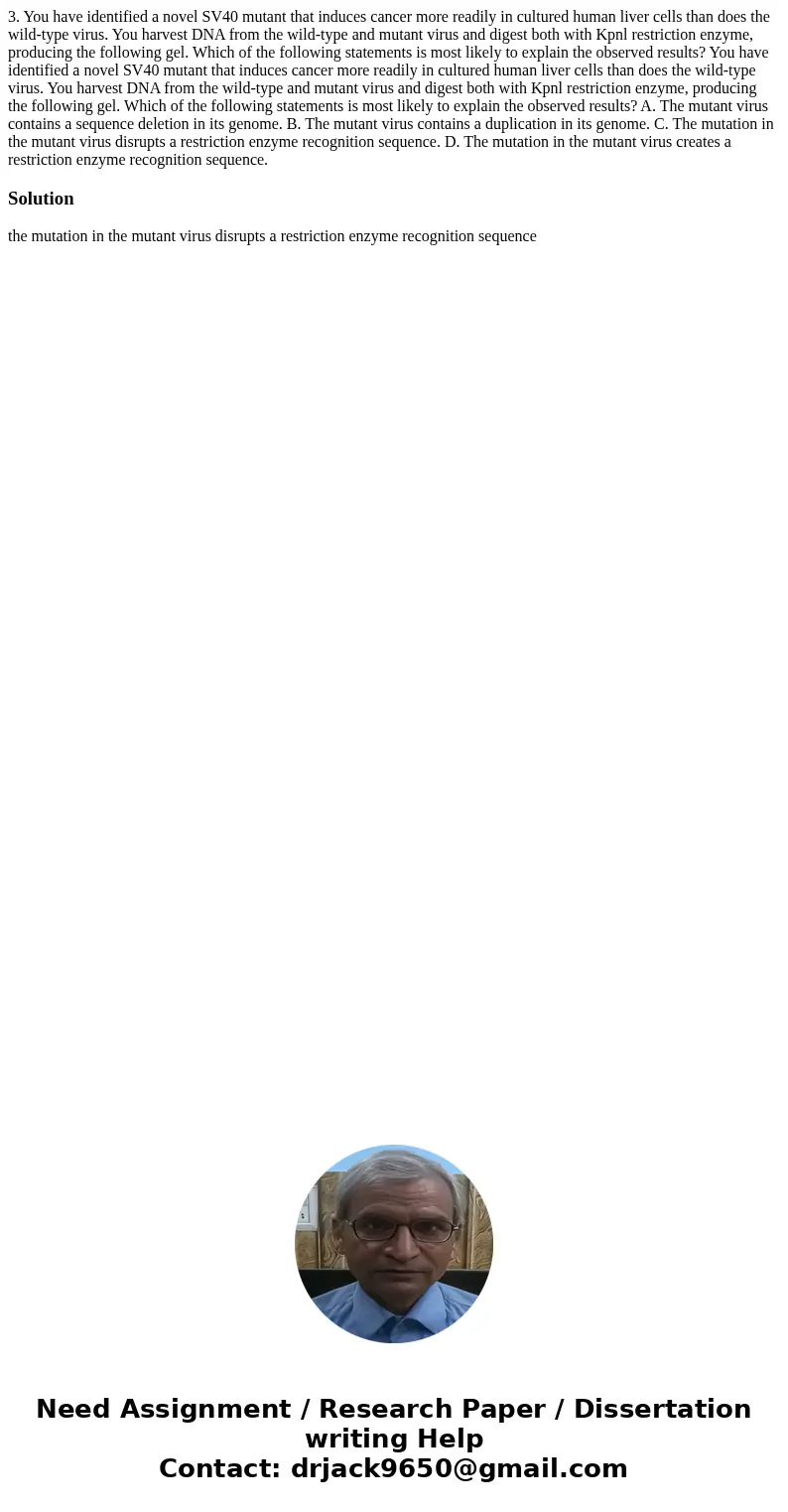3 You have identified a novel SV40 mutant that induces cance
3. You have identified a novel SV40 mutant that induces cancer more readily in cultured human liver cells than does the wild-type virus. You harvest DNA from the wild-type and mutant virus and digest both with Kpnl restriction enzyme, producing the following gel. Which of the following statements is most likely to explain the observed results? You have identified a novel SV40 mutant that induces cancer more readily in cultured human liver cells than does the wild-type virus. You harvest DNA from the wild-type and mutant virus and digest both with Kpnl restriction enzyme, producing the following gel. Which of the following statements is most likely to explain the observed results? A. The mutant virus contains a sequence deletion in its genome. B. The mutant virus contains a duplication in its genome. C. The mutation in the mutant virus disrupts a restriction enzyme recognition sequence. D. The mutation in the mutant virus creates a restriction enzyme recognition sequence. 
Solution
the mutation in the mutant virus disrupts a restriction enzyme recognition sequence

 Homework Sourse
Homework Sourse